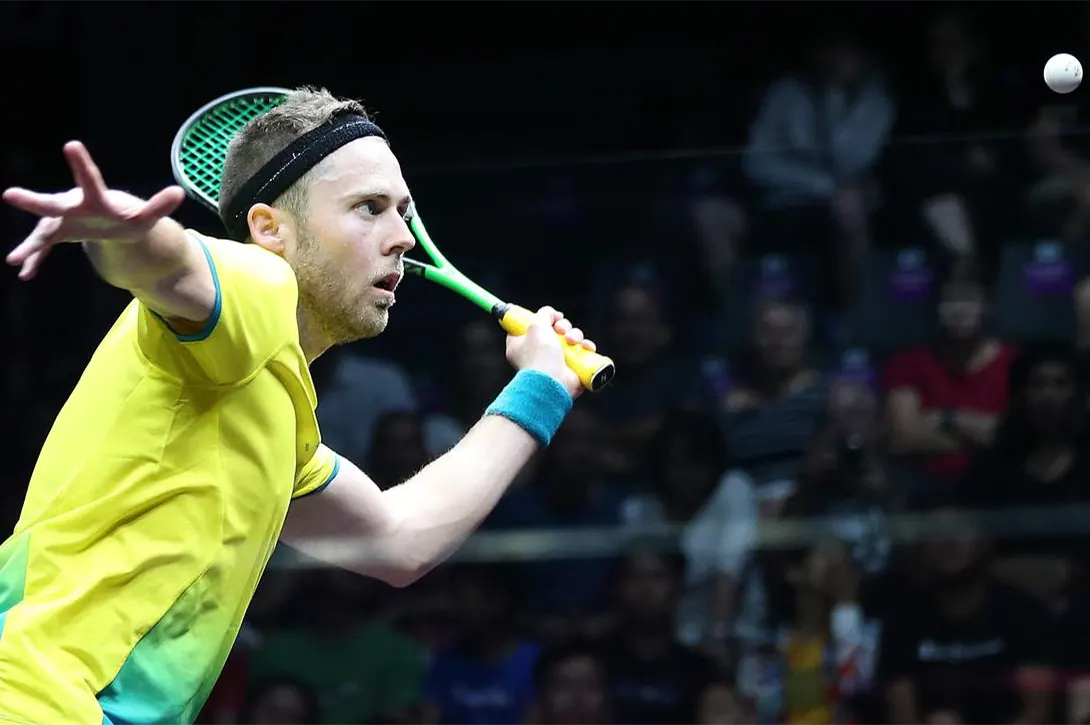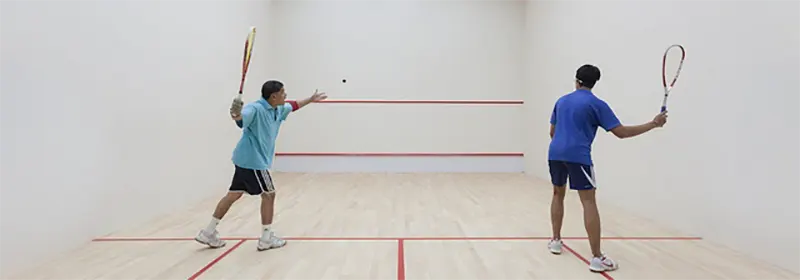15 July 2022 / 3-Min Read / Translate

So, to clarify the title question, you are allowed one serve per point, unless there is a let. A good example of a let on a serve would be a high serve played from the right hand service box that hits the side wall near the back wall in the left hand corner. The returner initially tries to swing to hit the ball but misses, but is able to turn and wants to hit the ball after it has hit the back wall. Hitting the ball in this case could potentially be dangerous because you don’t know exactly where your opponent is. In 99% of these cases this is an automatic let for safety reasons. This rule is referred to as “turning”.
At the beginning of a match, players decide who is going to serve by spinning a racket. Many rackets have “My Serve” and “Your Serve” printed on them, but you can use the direction of the brand’s logo as well. In this case you would call “Up” or “Down”, etc. Whatever way you would find some binary method of who serves.
The server MUST have at least one foot inside the service box when they make contact with the ball – so no jumping, like in tennis. Remember, the lines in squash are OUT, so if the foot is touching the line when they serve, that is called a “foot fault”. Foot faults are rarely called in squash, but they do happen.
The server can choose which side they start from, but if they keep wining points then they MUST alternate the sides they serve from. So, if you are playing a left handed player, your first serve should probably be from the left side so that you serve to their backhand, which is weaker in most players.
The serve MUST hit the front wall above the Service Line. on the from wall (that’s the one about head-height) and must NOT touch any of the other lines. It MUST bounce (unless your opponent volleys the ball) in the opposite quarter of the court. If it bounces in front of the Short line (the one that goes across the court from each side wall) or in the back quarter where you are serving from) it is a fault and the point goes to your opponent. It MUST hit the front wall first, but after that can hit any combination of wall – but it still has to land in the opposite back quarter of the court(unless your opponent volleys the ball).
If you win the rally, you get a point and serve from the alternate side that you just served from. If you lose the rally, your opponent gets a point and chooses which side they want to serve from. If you then win the next point, you can choose which side to serve from, but for as long as you keep winning points, you MUST alternate the side you serve from.

Doesn't look like he has practiced his serve, does it?'
Unlike tennis where it is quite common to win the point because of the serve, in squash the better you get, the less likely that is to happen. So, when you first start playing, you can win lots of points on your serve, but once you reach a certain club standard that almost never happens.
The side wall is your best friend when it comes to serves. If you can make the ball hit the side wall near where you opponent wants to hit it, as long as you haven't hit the serve too hard, it should cause them lots of problems. You can serve at your opponent or even down the middle, but they are more risky serves as they give your opponent space to move.
I always tell my on-court pupils to develop a walking-style serve and I am telling you too. The last thing you want to do is stand near the side wall, serve and then watch the ball, and only then move to the T. That’s not the best way to serve. You should start near the side wall, but walk towards the T and before you leave the service box throw the ball in front of you, so that it’s a natural movement towards the T.
The other benefit of this type of service action is that your opponent can not surprise you because you are looking in their direction. For right handed players, this is easy on the left side, but harder on the right, because you have to develop a backhand serve – and for some that’s really difficult to learn.
I still highly recommend server backhand from the right box (assuming you are right handed, left box if you are left handed!) because it will improve your backhand and most people need their backhand improved!